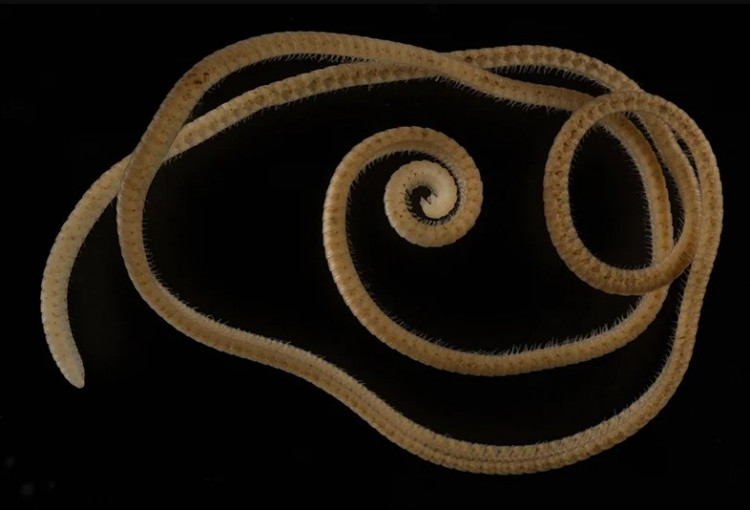Scientists have unearthed the world's first "true" millipede, which appears to have been plucked from a nightmare.
Eumillipes Persephone is an eyeless millipede with a long body and over 1,000 legs. E. Persephone was discovered by Virginia Tech researchers in the depths of Australia's underground. It is the country's first super-elongated millipede, according to scientists. It's also the newest holder of the record for the animal with the most legs.
In Latin, millipede means "a thousand feet." Until now, the millipede Illacme plenipes from California had the most legs of any millipede, with 750.
"This new millipede with 1,306 legs nearly doubles the number of legs of the previous record-holder," study lead author Paul Marek, an entomologist at Virginia Tech in Blacksburg, said.
E. Persephone is named after the Greek underworld ruler Persephone. Like its namesake, it seemed to have crawled straight out of the depths of hell. The findings on the millipede were reported in the journal Scientific Reports. The post provides a thorough overview of what the millipede looks like and includes some up-close photographs that will haunt your nightmares.
The millipede was discovered in the resource-rich region of Goldfields-Esperance in western Australia, according to the researchers. Because the creature's native habitat is being threatened by increasing surface mining, this discovery is more vital than ever for environmental protection. The new millipede is said to be a member of the Siphonotidae family. However, it resembles millipedes of the order Siphonophorida.
The new species' long, narrow whitish bodies have up to 330 segments and measure up to 95.7 millimeters long and 0.95 millimeters wide. To help it explore underground, E. Persephone has an eyeless cone-shaped beaked head with gigantic antennas.
This millipede may insert its beak into fungus to gulp out their innards, according to earlier research on related species. The millipede's beak may also aid in burrowing, "because its wedge shape is ideal for probing thin crevices through which it can crawl," Marek said.
But it's the fact that this is the first "true" millipede we've uncovered that makes this find so exciting. Millipedes have been on the globe for more than 400 million years, according to scientists. However, up until now, the highest leg count we've observed on one has been 750. That's a long way from the 1,000 millipedes should come with.
Now though, with the E. Persephone's 1,306 legs, it's a different story. We now have a "true" millipede. According to scientists, these creatures only have four legs at first. As they grow older, they add more segments, including more legs. However, scientists aren't sure when they'll stop developing new legs.






